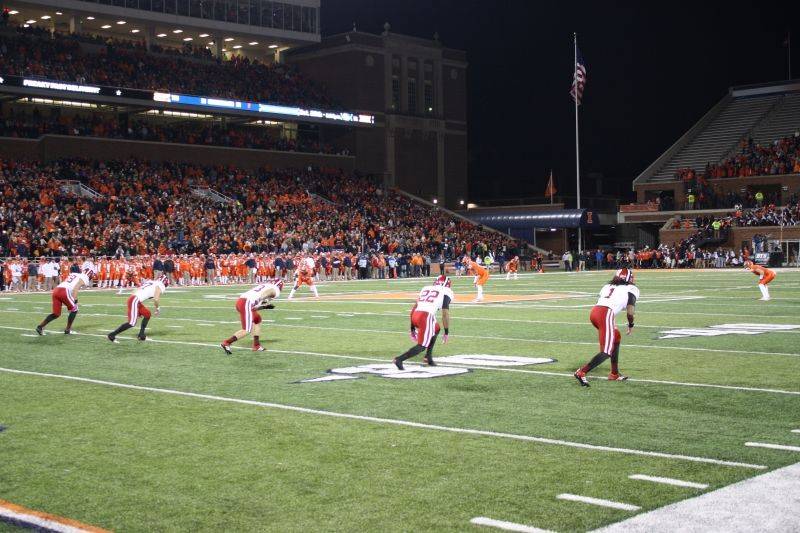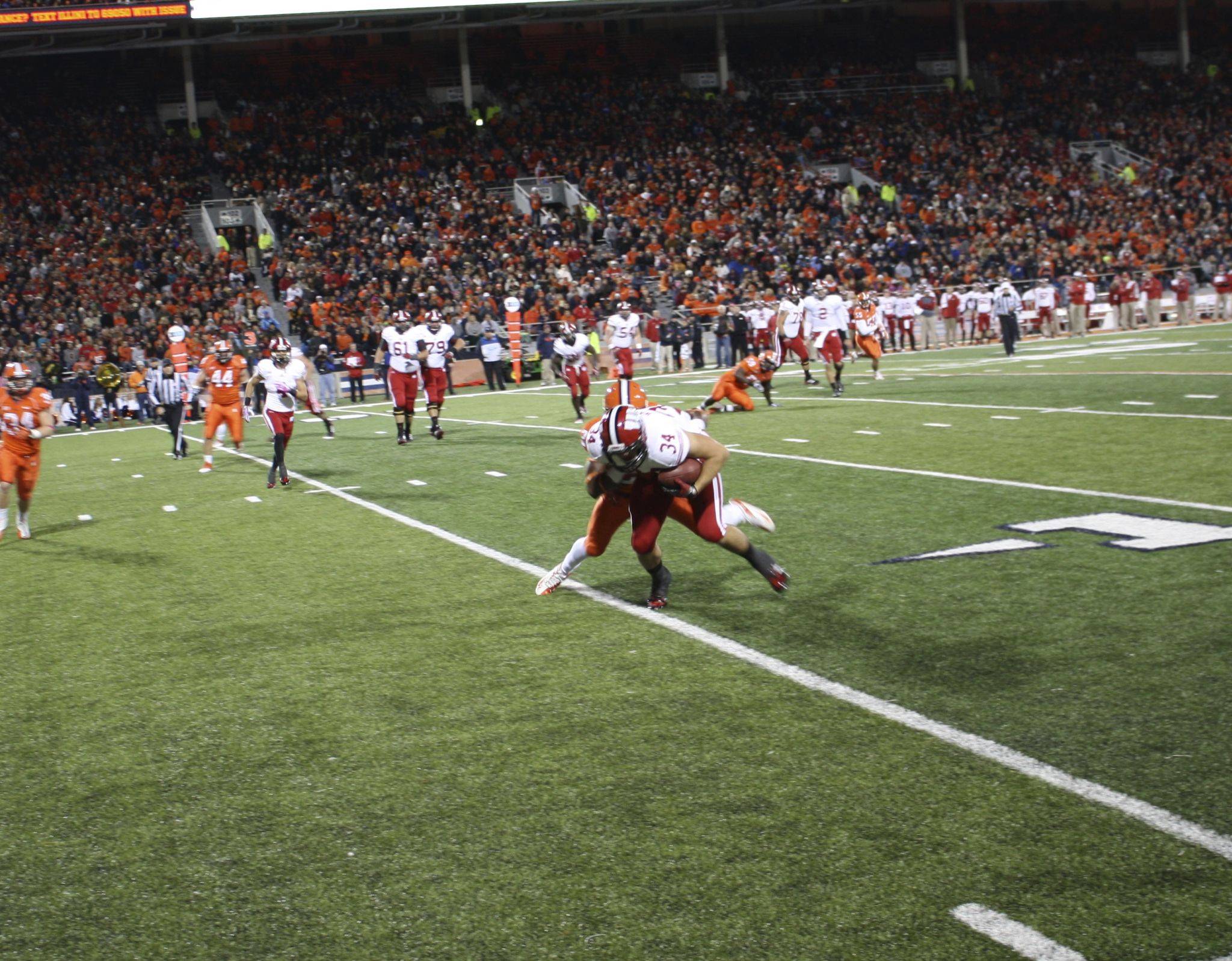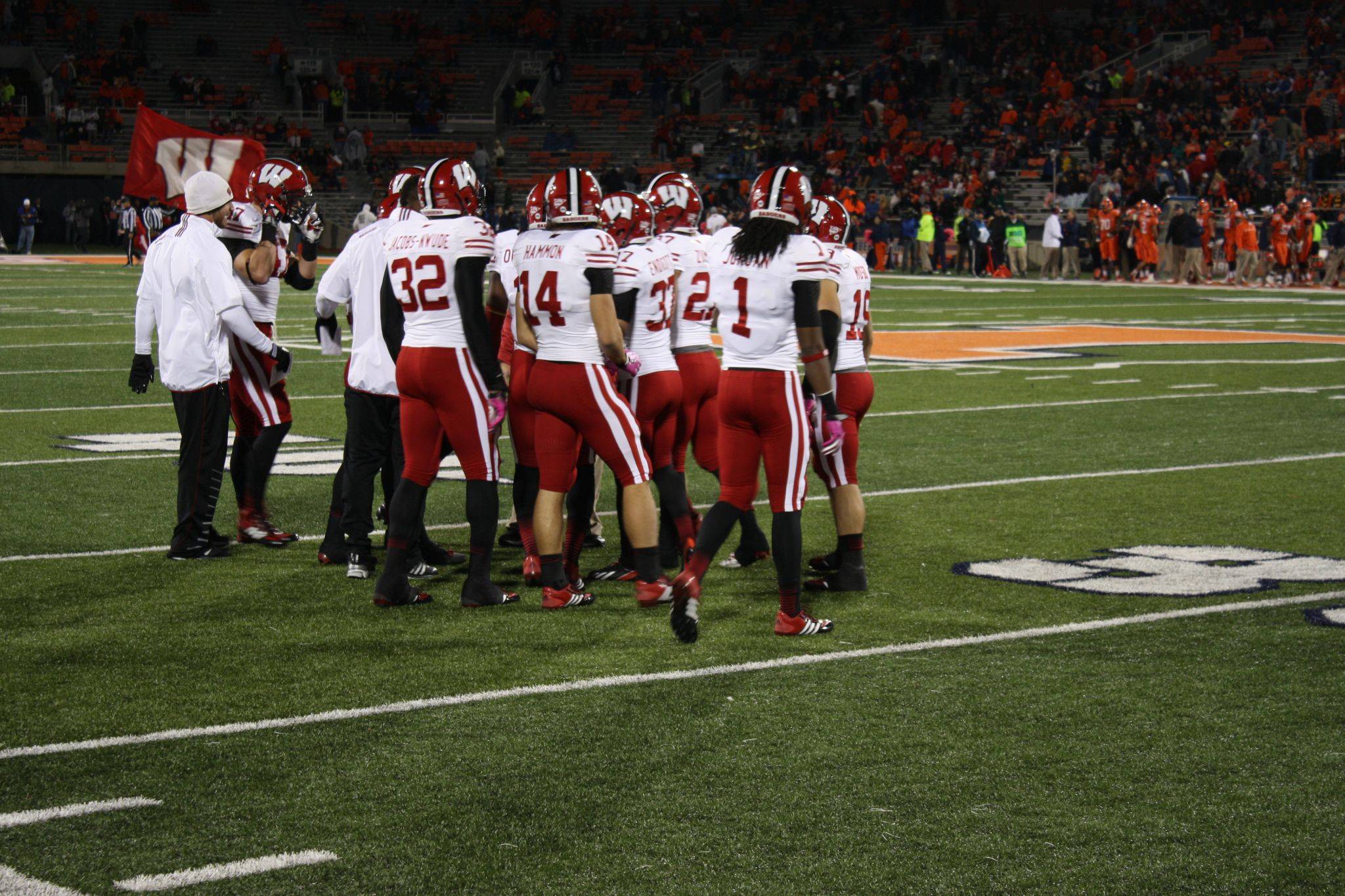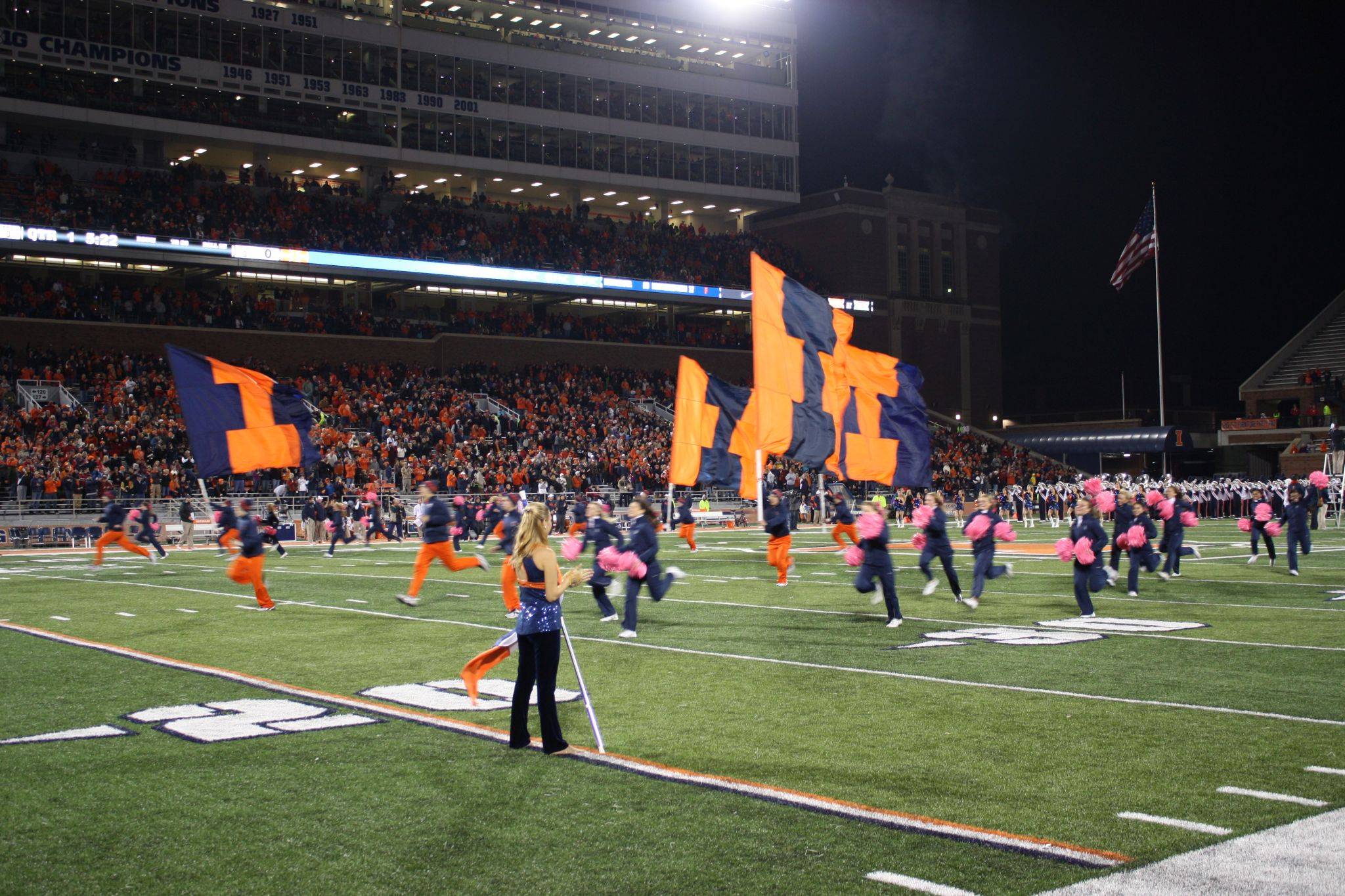Illinois Football is at the halfway point in the season, with six games down and six to play. By one important measure, they’ve been halfway successful, with three wins and three losses.
About those losses: Saturday was bad. The Illini had a number of early and costly mistakes that put them down three touchdowns, and they were never able to claw out of that early hole. Only the most myopic, or pessimistic, of fans could say that things couldn’t be worse. Things were much, much worse last year. The offense and special teams are markedly improved in a number of important ways.
True, the defense is badly in need of a consistent way to stop the run, and Illinois has yet to record a conference win (same as last year), but the team is, on whole, noticeably better in terms of both statistics and results, although as the temperatures turn brisk, you are forgiven if the quality win against Cincinnati feels as distant as sunny days by the pool.
Illinois football fans mostly fall into two camps at the moment: pessimistic or resigned. At this point, a single conference win, while still reachable, is the most that people are hoping for.
In addition to hitting the median mark, the autumnal chill and extra week off before last week’s game had me of a ponderous mind on the unique nature of football as part of American sports culture. Notably, why we watch it but don’t play it, and what that says about us and our relationship to the sport.
I would argue that football is rather unique amongst American sports, in that the number of people who watch it is drastically out of balance with the number of people who play it. Youth football leagues aside, there is essentially no adult participation in the sport that, by spectators is far and away our nation’s most popular. Why is that?
 “Let’s get ready to watch other people rumble!”
“Let’s get ready to watch other people rumble!”
I’ll bet $100 to a day old donut (Carmella’s old fashioned, obviously) that you can’t find someone who watches professional golf who does not actually, themselves, golf. Ditto for tennis. While the more popular sports have a drop in participation, the watch/play ratio never approaches that for football. Adult baseball or softball leagues are relatively easy to find, and recreational basketball has a fair amount of participation.
“It’s the amount of equipment involved,” you say, or “it takes a lot of space to play football,” or “it takes a lot of people to play an organized football game.” Hockey has all these things against it and more (you don’t exactly stumble across open fields of smooth flat ice the way that you do grass), but adult participation numbers in tackle football and hockey are roughly equal, despite the vast popularity advantage that football enjoys over hockey.
This came to mind as I thought of the national culture towards running, since the Chicago Marathon took place on Illinois’ bye week. I’m guessing that, if you remove Usain Bolt from the mix, most Americans couldn’t name a single professional runner. Nevertheless, 39,115 runners finished the Chicago Marathon. I bet that is more people than have attending any single Illinois home football game this year, notoriously inflated official head counts notwithstanding. Few people know who won the race. The focus is on the general and widespread participation and personal accomplishment. In fact, the most astounding story from the marathon is not the person who finished first, but the person who finished last.
It isn’t this way everywhere: this is cultural. In Japan, marathons are extremely popular, but are mostly spectator events. Consider the prestigious, 67 year old Fukuoka Marathon: last year it had 527 finishers, which isn’t all that surprising, considering that unless you have a previous marathon under 2 hours and 40 minutes, they won’t even let you register (and if you fall behind 2:50 pace they pull you off the course).
This is pretty much how tackle football is in the United States for everyone older than high school age: only the truly excellent need apply. Why is that?
Though the “modern gladiator” references have become trite and cliché, I think in this respect it is apt, as I doubt there were a lot of recreational gladiators. You would be shocked at the number of people you hear in the press box at Illini games openly saying they’d never let their children play football, and these people are some of the most dedicated to the sport.
We treat the football players as our proxy warriors, sent out to fight for us as our University representatives in a game that we are unwilling to fight ourselves. We cheer their successes, lament their failings, and maybe feel a momentary moral cringe when someone is injured, but only until they cut to commercial so we can go fetch another beer and wait for the action to start back up.

We complain about the porous Illini run defense, but how many of us would be willing to try to run past Jonathan Brown, even with the protection of full pads? Football is a game we love to because of, not in spite of, the fact that we would not play it at this level. The dangerousness of the enterprise and the seeming impossibility of the feats are exactly why we tune in. Whereas Americans may see a marathoner and say “I could do that,” and go do it, we see a footballer and say “I could/would never do that,” so we settle in to see what happens. We simultaneously cringe and cheer at a brutal hit, and then back it up to see it again. American used to celebrate prizefighters, but with all the televised football, that isn’t necessary anymore.
As more and more is known about the dangers of closed head injuries, America is beginning to come to terms with these issues, and I certainly don’t have all the answers. As someone who loves the game and relishes my time in the press box and talking to the players, my hands are as dirty as anyone’s. But for the most part, this is glossed over: put on some pink gloves for breast cancer awareness, and nobody will ask too many questions about the violence of the game (let alone football’s atrocious history of relations with the lady-folk).

On Saturday, Illinois will take on Michigan State, and it’s Homecoming. Lots of alumni will be coming back to the area, going around to the buildings that they used to go to classes in, expressing their shock at how much Green Street has changed since 19-whatever when they were last here. A whole bunch of them will head down to Memorial Stadium to take in the action, no helmets required.








